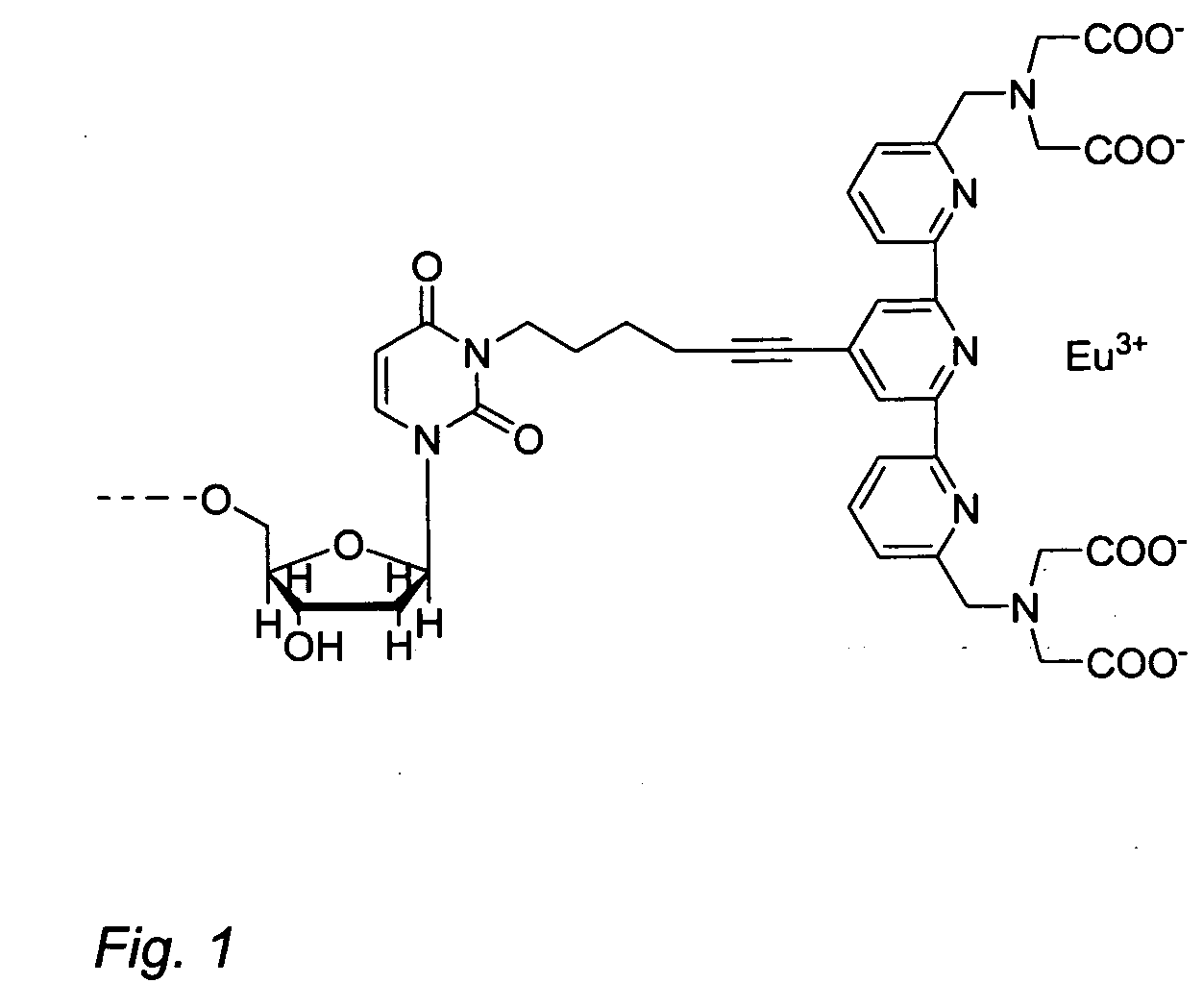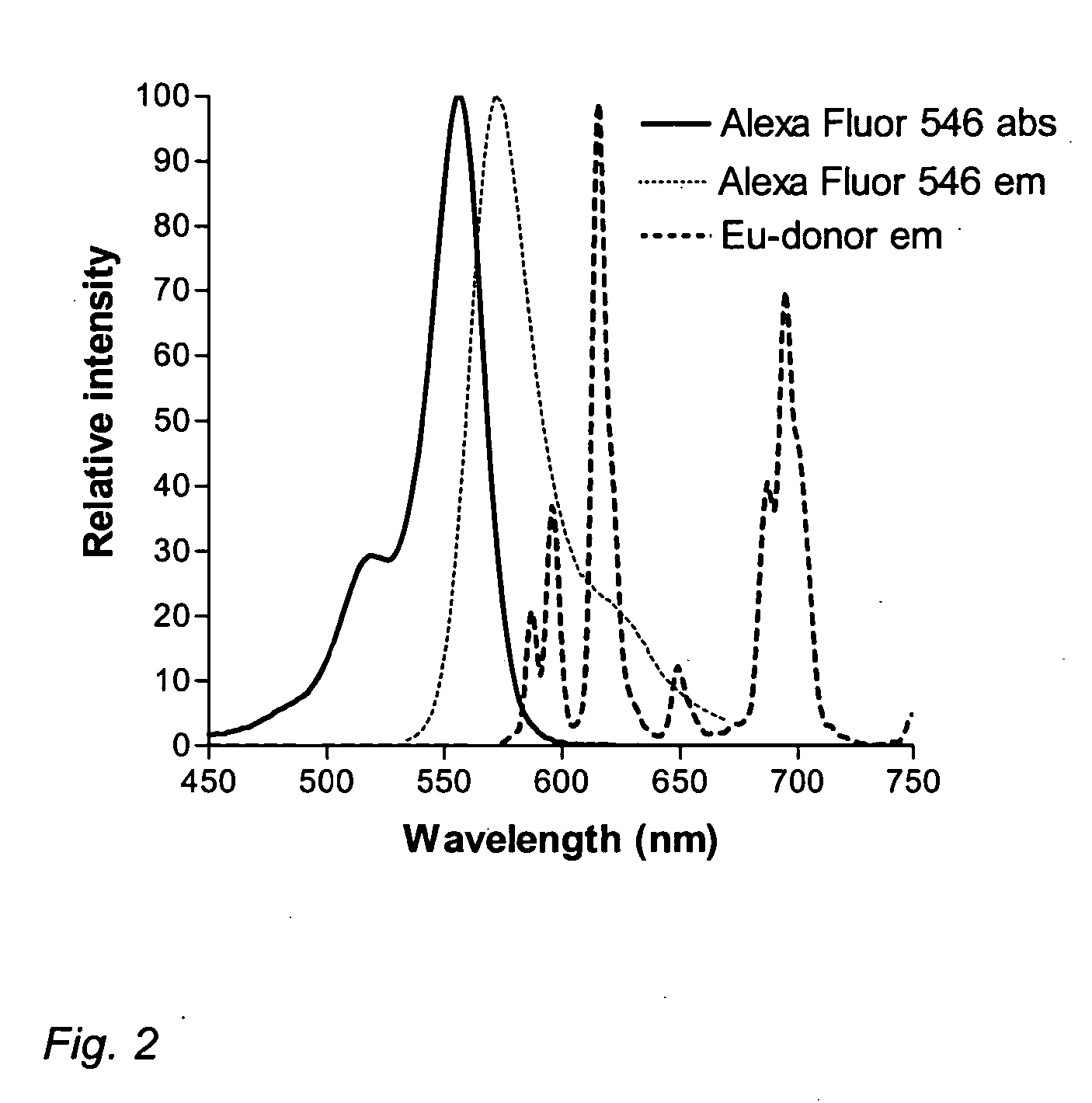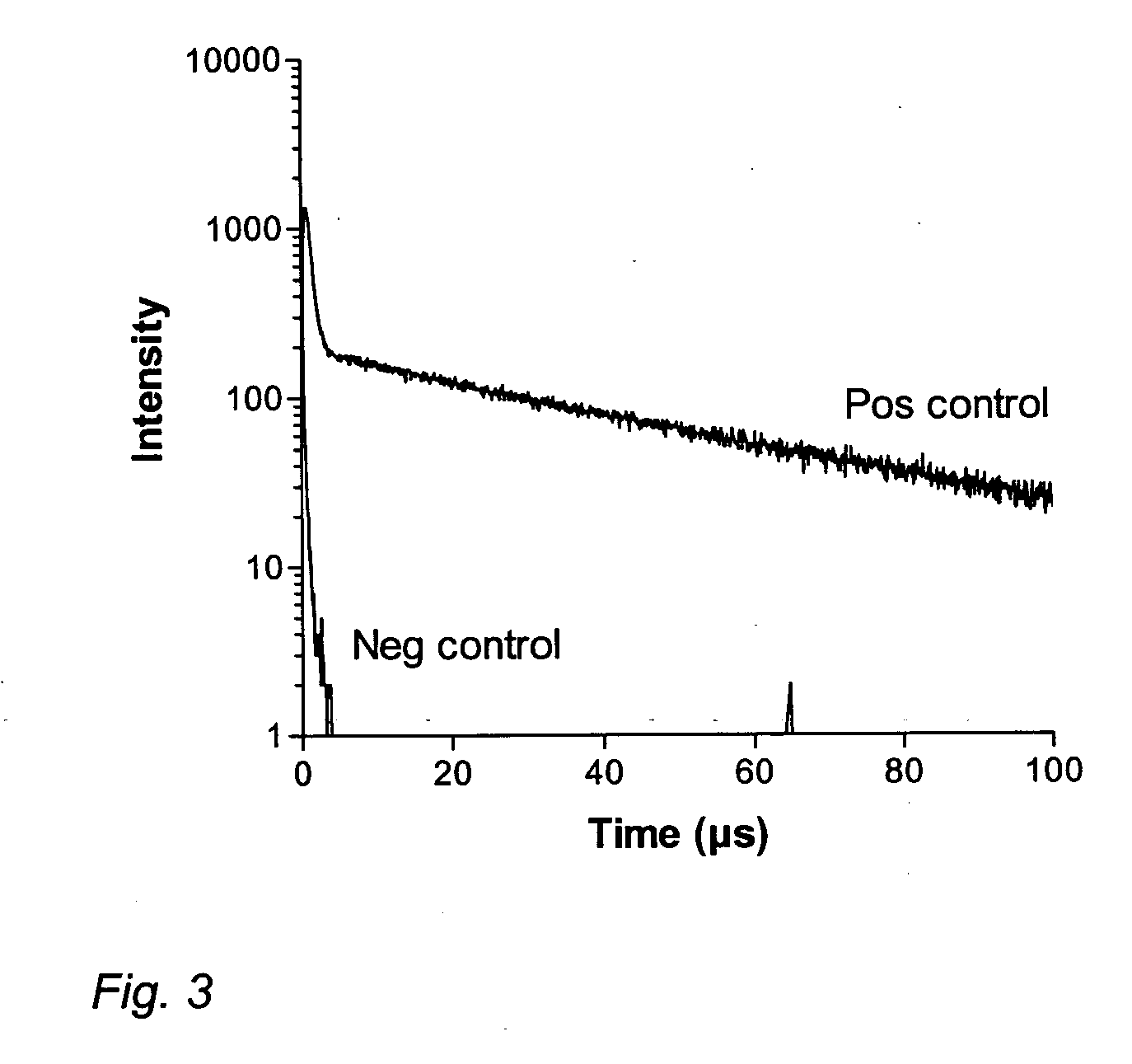Highly sensitive homogeneous assay based on anti-Stokes' shift FRET measurement
a homogeneous assay and fret measurement technology, applied in the direction of biochemistry apparatus and processes, material testing goods, sugar derivatives, etc., can solve the problems of not directly solving, reducing the sensitivity of the acceptor measurement, and not solving the problem of the donor, so as to achieve the effect of enhancing the acceptor signal
- Summary
- Abstract
- Description
- Claims
- Application Information
AI Technical Summary
Benefits of technology
Problems solved by technology
Method used
Image
Examples
example 1
[0055] This example demonstrates the proof of principle for nFRET and anti-stokes' shift FRET measurement.
[0056] A homogeneous model assay was developed for synthetic ΔF508 (cystic fibrosis) mutated DNA-target 5′-TTAAAGAAAATATCATTGGTGTTTCC TATGATGAATATAGATACAGAAGCGTCA-3′. Mutant and wild-type target specific donor-probe (3′-TACTTATATCTATGTCTTC-5′) was labeled to its 3′ end with Eu-terpyridine chelate W8044 (PerkinElmer, Wallac, Finland). ΔF508 mutation specific acceptor-probe (3′-AAATTATAGTAACCACAAA-5) was labeled to its 5′ end with Alexa Fluor 546 dye (Molecular Probes, USA). The underlined letters in the sequence denote bases that are noncomplementary to the target-sequence and prevent the probe from acting as primer during PCR. Hybridization was performed in room temperature in a total volume of 200 μl containing 15 mM Tris-HCl (pH 8), 2.5 mM MgCl2, 50 mM KCl, 100 mM NaCl and 0.1% TritonX-100. The hybridized samples were dispensed to microtitration plates (1508-0010, PerkinElmer...
example 2
Testing of Different nFRET Acceptors
[0059] This example demonstrates that different upper energy levels of the Eu-donor cause different decay populations to the induced nFRET acceptor signal.
[0060] Additional series of nFRET acceptors was introduced to the same model assay as described in Example 1. The Alexa Fluors 555, 532, 514 and 488 (Molecular Probes), used as acceptors, each have slightly different absorption properties and are spectrally more blue-shifted than Alexa Fluor 546 (FIG. 4). A reference decay curve of Förster type energy transfer was measured using Alexa Fluor 647 acceptor (Molecular Probes), which has strong spectral overlap with the Eu-donor (FIG. 4). In the plate fluorometer we used bandpass filter 530 / 7 nm for Alexa Fluors 488 and 514, and 572 / 7 nm for Alexa Fluors 532, 546 and 555. Alexa Fluor 647 was measured using 665 / 7 nm bandpass filter.
[0061] Background subtracted decay curves for different positive samples are shown in FIG. 5 and the fitted fluoresce...
example 3
[0065] This example demonstrates that the decay time and decay profile of the nFRET induced acceptor signal is not a direct function of the total energy transfer efficiency and donor decay time.
[0066] In Förster type energy transfer the total energy transfer efficiency is determined by the equation
E=1−τDA / τD=1−τAD / τD [1]
[0067] where τD is the decay time of the free donor, τDA is the decay time of the donor in the presence of acceptor and τAD is the decay time of the energy transfer induced acceptor emission. The latter part of the equation is valid only when τD>>τA (τD=1169 μs and τA<10 ns for the labels of this example).
[0068] The direct comparison of energy transfer efficiencies with different nFRET acceptors is difficult based on the measured acceptor signals, because the selected wavelength bands, filter transmittance differences and different quantum yields of the acceptors can have significant contribution on the measured signal intensity. The total energy transfer effici...
PUM
| Property | Measurement | Unit |
|---|---|---|
| wavelengths | aaaaa | aaaaa |
| volume | aaaaa | aaaaa |
| time resolution | aaaaa | aaaaa |
Abstract
Description
Claims
Application Information
 Login to View More
Login to View More - R&D
- Intellectual Property
- Life Sciences
- Materials
- Tech Scout
- Unparalleled Data Quality
- Higher Quality Content
- 60% Fewer Hallucinations
Browse by: Latest US Patents, China's latest patents, Technical Efficacy Thesaurus, Application Domain, Technology Topic, Popular Technical Reports.
© 2025 PatSnap. All rights reserved.Legal|Privacy policy|Modern Slavery Act Transparency Statement|Sitemap|About US| Contact US: help@patsnap.com



